The Menstrual Cycle
Article Sections
Introduction
The menstrual cycle involves a complex interplay of hormones controlled by the hypothalamic-pituitary-ovarian (HPO) axis to regulate the ovary and uterine endometrium. The menstrual cycle is approximately 28 days in length and consists of 2 main phases—follicular and luteal—separated by ovulation.
Hypothalamic-pituitary-ovarian axis
The HPO axis is the central regulatory system of the menstrual cycle and consists of the following components (Figure 1):
- Hypothalamus: Releases pulsatile gonadotropin-releasing hormone (GnRH), which stimulates the anterior pituitary gland.
- Anterior pituitary gland: Releases gonadotropins (follicle-stimulating hormone [FSH], luteinizing hormone [LH]) in response to GnRH.
- Ovary: Responds to FSH by initiating follicular development, which produces estradiol through follicular steroidogenesis.
Follicular phase (days 1-14)
The follicular phase begins on the first day of menstruation (
Continue Learning with UWorld
Get the full The Menstrual Cycle article plus rich visuals, real-world cases, and in-depth insights from medical experts, all available through the UWorld Medical Library.
Figures
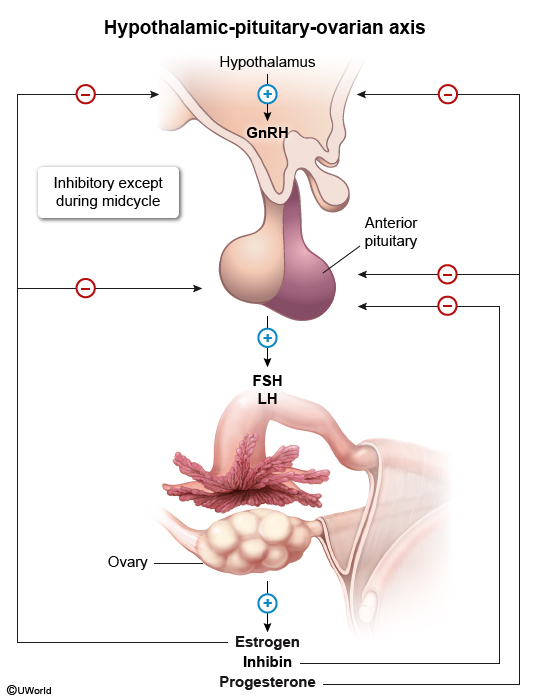
Figure 1
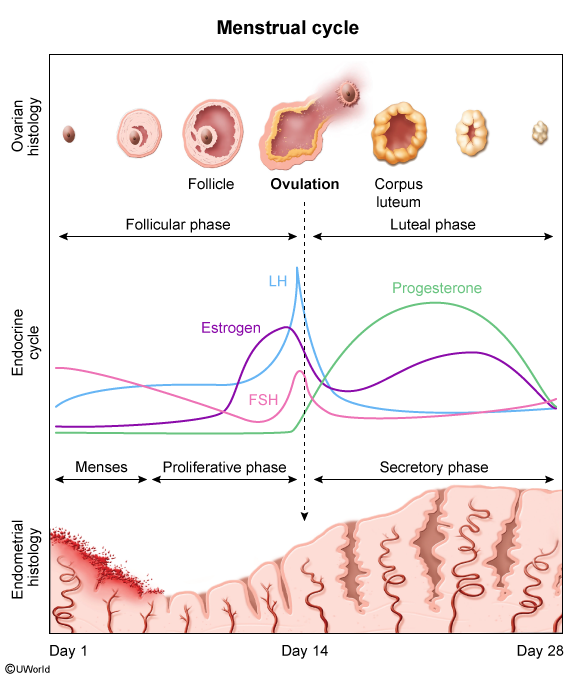
Figure 2
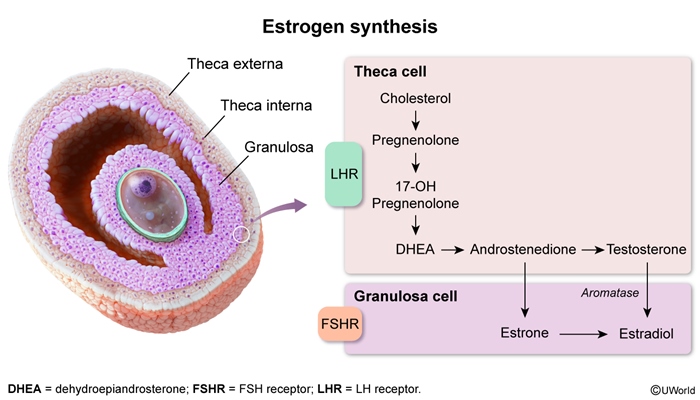
Figure 3
Images
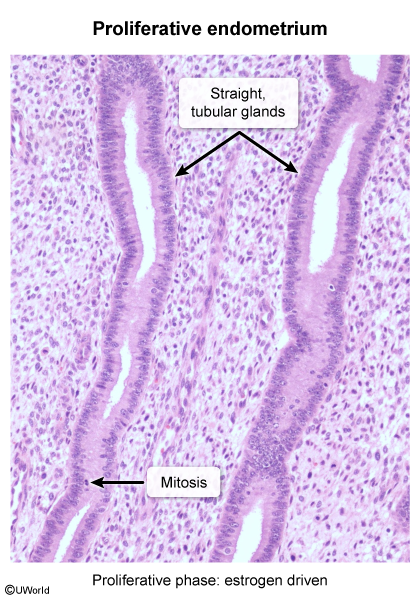
Image 1
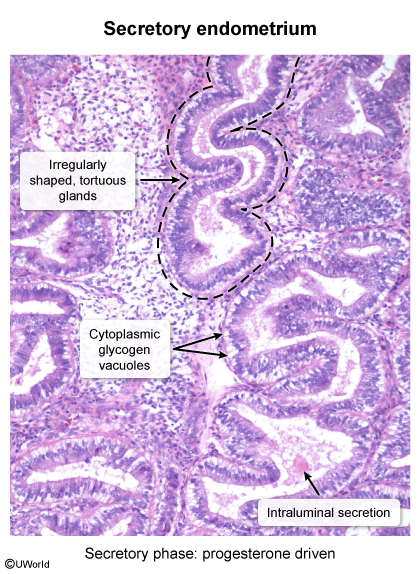
Image 2